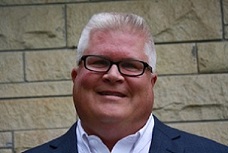
On January 30, 2014, the U.S. Federal News Service and the University of California at Riverside issued the following alert:
“Do not smoke and do not allow yourself to be exposed to smoke, because secondhand smoke and thirdhand smoke are just as deadly as firsthand smoke. While firsthand smoke refers to the smoke inhaled by a smoker and secondhand smoke to the exhaled smoke and other substances emanating from a burning cigarette that can get inhaled by others, thirdhand smoke is the secondhand smoke that gets left on the surfaces of objects, ages over time, and becomes progressively more toxic.”
This was based on the first animal study conducted on the effects of thirdhand smoke. So that we are clear, and why this pertains to hotel properties, this study refers to the toxins and carcinogens that can be found in cigarette smoke that end up on carpets, chairs, and other surfaces in a hotel guestroom. Imagine a baby playing on the carpet in a guestroom that allows smoking. A 2006 Surgeon General’s report says that there are at least 250 poisonous toxins found in cigarette smoke. So the possibility of that baby coming in contact with these toxins, through touching the carpet with his or her hands and then touching his or her eyes, mouth, or nose, can be considerable.
Negative Health Impacts Proven
And the negative health impacts could be considerable as well. “We studied, on mice, the effects of thirdhand smoke on several organ systems under conditions that simulated thirdhand smoke exposure of humans,” said Manuela Martins-Green, a professor of cell biology at the university who led the study. “We found significant damage occurs in the liver and lungs. Wounds in these mice took longer to heal. Further, these mice displayed hyperactivity.”
More specifically, the researchers reported the following:
- Contact with thirdhand smoke increases lipid levels (fat-like substances) in the liver and “non-alcoholic fatty liver disease, a precursor to cirrhosis and cancer and a potential contributor to cardiovascular disease.”
- In the lungs, thirdhand smoke simulates “excess collagen production and high levels of inflammatory cytokines (small proteins involved in cell signaling), suggesting propensity for fibrosis with implications for inflammation-induced diseases such as chronic obstructive pulmonary disease and asthma.”
The news release ended by reporting, “Although the potential risks attributed to thirdhand smoke exposure are increasing, virtually nothing was known about the specific health implications of acute or cumulative exposure—until now.”
Dealing with Thirdhand Smoke
If you have not heard of thirdhand smoke before, rest assured you are not alone. But now that you have, the question hotel administrators and housekeeping departments must ask themselves is how to deal with this problem. In many cases, they may be dealing with it already. Because many of the hotel owners and administrators who read this publication are “green focused,” it is quite possible they have already taken steps to eliminate smoking in their properties entirely.
However, for those that still allow smoking in specific guestrooms or specific areas, effective and thorough cleaning of these areas where smoking is allowed is your best defense against thirdhand smoke. Following are some cleaning strategies to help eliminate or at least significantly minimize the amount of thirdhand smoke that accumulates in carpets, fabrics, and other touchable surfaces:
Set up a cleaning schedule: Because we know that carpets, rugs, and fabrics will absorb thirdhand smoke, set up a cleaning schedule for these areas based on room usage, rather than cleaning them a set number of times per year. There are no guidelines as to how often these areas should be cleaned, but administrators have two ways to detect if toxins are building up. One is the “sniff test,” which can be surprisingly effective. Second, there are now sensors that can detect both second- and thirdhand smoke by measuring the presence of nicotine vapors in a room area.
Employ effective cleaning methods: Carpets and fabric chairs can be cleaned using carpet extractors; select cleaning solutions designed to sanitize surfaces. However, what can be a more effective option is to clean fabric as well as hard surfaces—floors, counters, fixtures, walls, and so on—using an aqueous ozone cleaning system. These cleaning systems have sanitizing capabilities, which is why they are used to treat water and clean fruits and vegetables as well as some medical tools.
Refurbish rooms when necessary: If the decision is made to eliminate smoking in the property altogether, those guestrooms where smoking has previously been allowed must be renovated and refurbished. This may include removing all hard and soft surfaces, wallboard from walls, HVAC systems, draperies, and so on and starting new.
As to renovating the guestroom, Suzaynn Schick of the Center for Tobacco Control Research and Education at the University of California, San Francisco, says, “It’s like cleaning up after Hurricane Katrina.” In other words, there’s a lot to do to remove all smoke toxins from a guestroom.
Matt Montag is National Sales director for Cleancore Technologies, a leading manufacturer of aqueous ozone cleaning systems. He can be reached through his company website.







